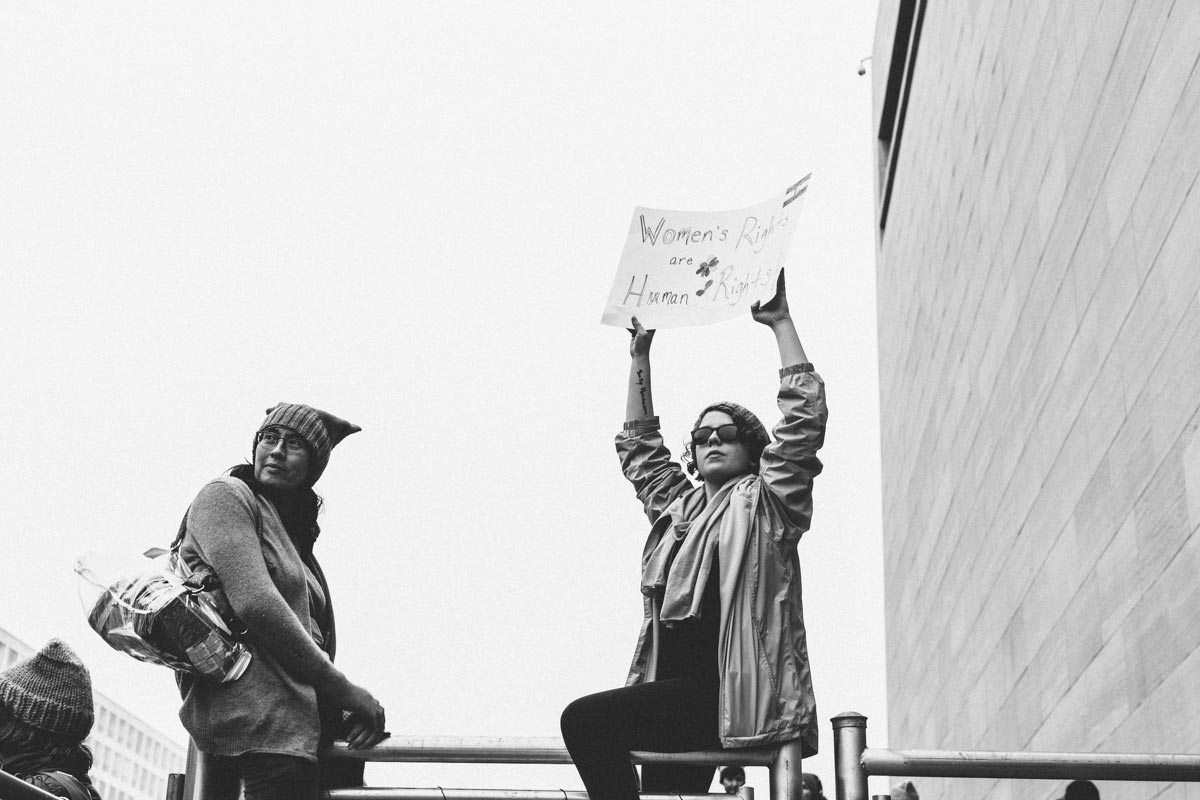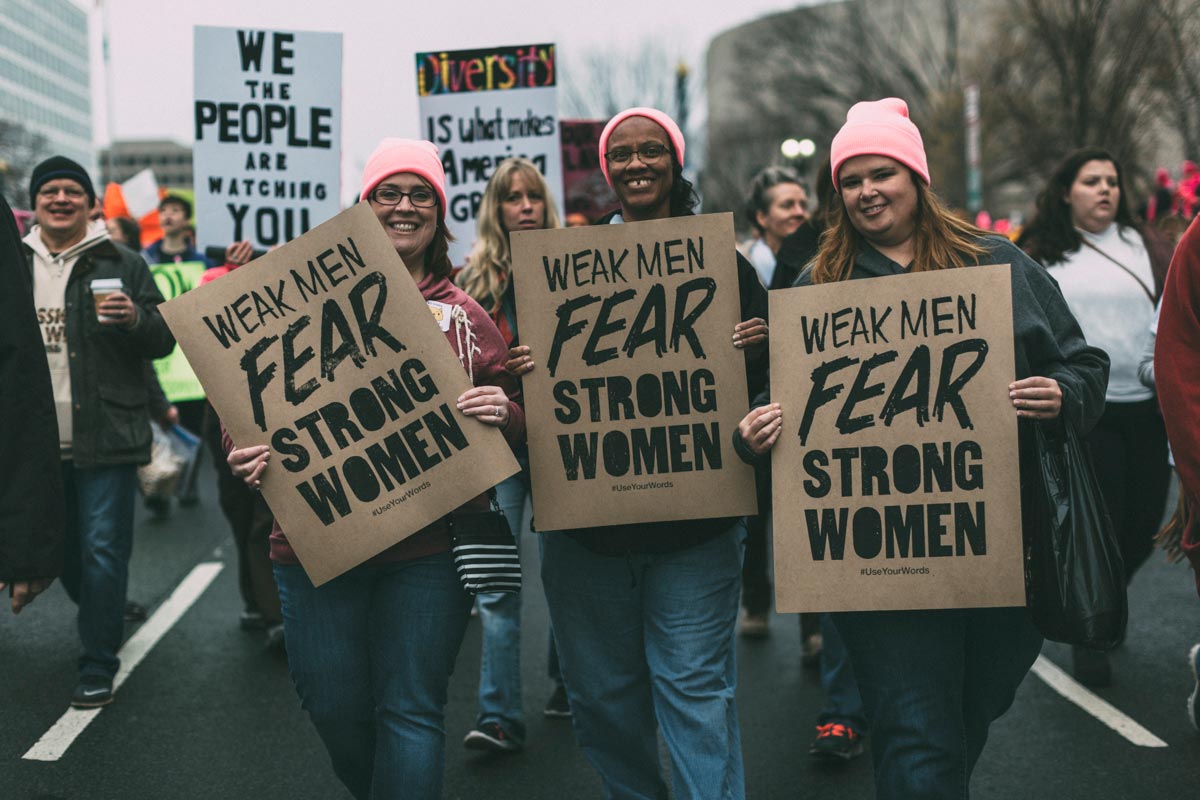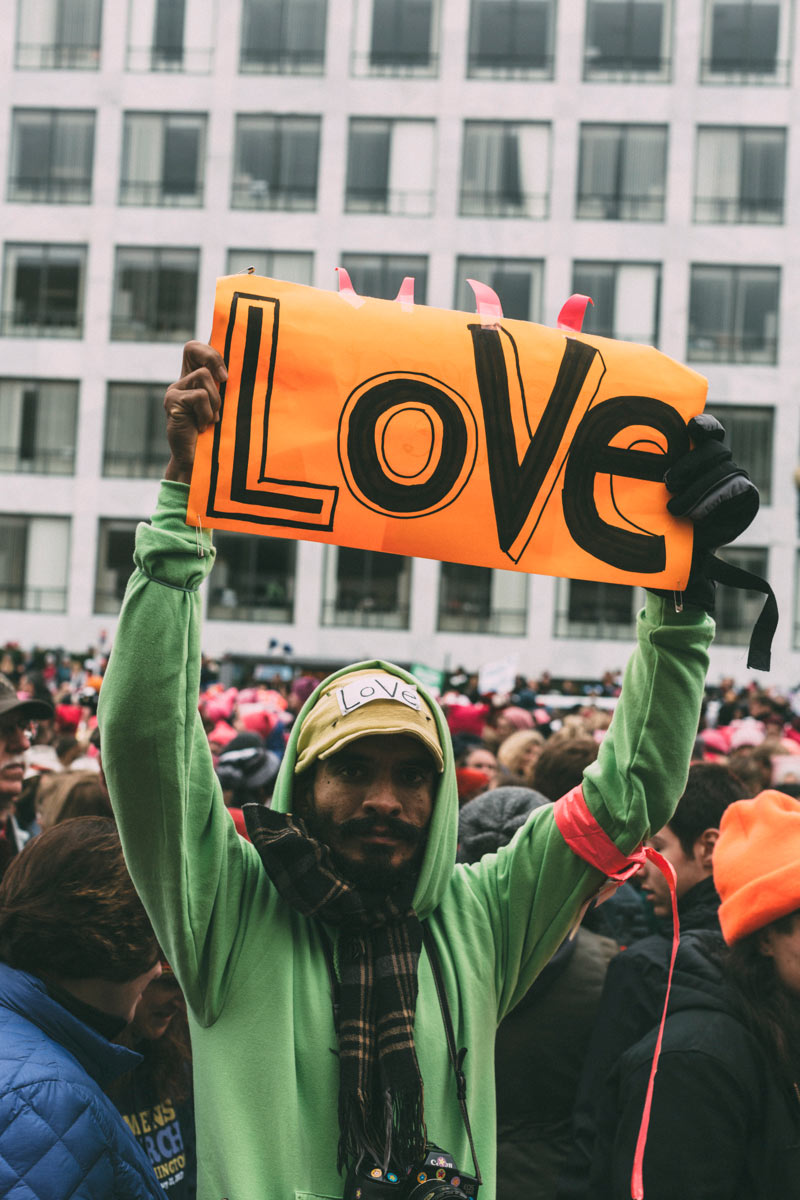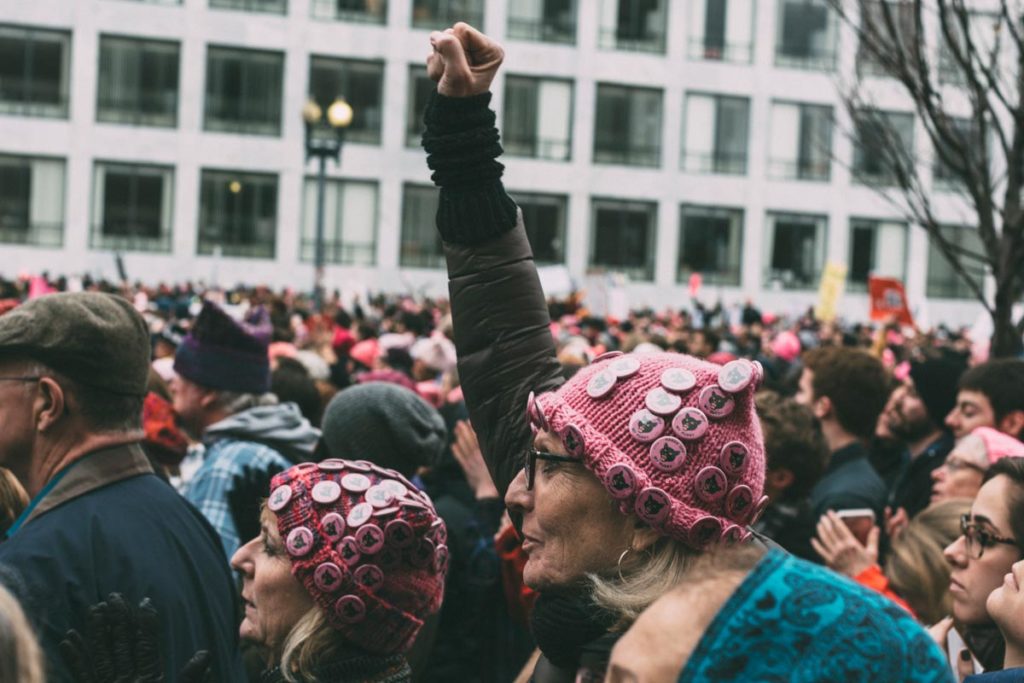With my newborn strapped to my chest, I walked past the high-end shops of Newbury Street to Boston Common. Summoned by the power of digital communication, myself, my newborn and 175,000 protesters marched to the oldest city park in the country to protest hate. On January 21, 2017, nearly 3 million people took to the streets of American cities with others around the world to protest the inauguration of the 45th President of the United States. The Women’s March on Washington and sister city marches mobilized generations of caring people from every background to exercise their civic right to assemble.
Later that evening, Boston Parks and Recreation and the Boston Police Department used their official Facebook pages to thank the protesters. The cops noted: “. . .the men and women of the Boston Police Department would like to thank you for the high levels of respectful and responsible behavior on display throughout the day.” Though marchers and police met earlier in the day on the streets, they met again through the Internet later that evening via emails and more messages of thanks.
Setting aside some post-march commentary on whether or not the reason for these cordial encounters was a result of a largely white crowd, we can all agree that Massachusetts is a liberal bubble and that this was proof that activism has gone mainstream. It also shows the extent to which methods of speaking truth to power (or of “power” speaking to the people in this instance) are evolving thanks to digital media.
“I never met a single person in my committee till the day of the march.”
After November 8, Facebook began to light up with calls to rally. Just like Donald Trump using the internet to fan the flames of ignorance, his opposition rose up immediately using digital tools to organize in their defense. Freelance marketing and communications consultant Mary Badger was one of the main organizers for the March on Boston. After the election, she was “horrified” by the state of affairs. “I started talking to friends, [asking] ‘What are we going to do?’” When she heard about the Women’s March on Washington, she decided to get tickets to go, but within minutes, she saw on Facebook that people were organizing a Boston march. Just after that, someone contacted her to help organize it. “It blossomed to a group of 50 of us,” she says. They first met in person. “There were 17-year-olds and 70-year-olds, people from every demographic,”she recalls. Next they divided into committees that would handle the different aspects of the march. Badger headed up marketing and communications. But instead of meeting in person again, they met weekly online.

“I never met a single person in my committee till the day of the march,” she says. A variety of digital tools were used. They had a Google Doc with a plan for each week; people took on tasks as they came up. After the first week of creation, they blew past their expected numbers for the march. “Our first goal was 7,500 people and close to 200,000 came out. The first permit was for 400 people! We had no idea what we were getting into.”
Her committee mostly ended up emailing to plan, though each committee had its own way of communicating. Weekly conference calls helped organizers with less experience interact with those with more.
“Our first goal was 7,500 people and close to 200,000 came out. The first permit was for 400 people! We had no idea what we were getting into.”
She explained that the sister marches and their efforts are separate from the main Women’s March on Washington. Though I was participating in a sister march, much of my family was at the national march in Washington, D.C. Three generations—my parents, my brother, my niece, our cousins and their kids—were witness to one of the largest protests of our time. My parents flew up from their Miami home. “My friends called me and said they heard a march was being planned. I began my own Internet search and went on to register for the march,” my mother, a former teacher and counselor of the deaf and sometimes activist, Mary Ellen Tracy relays of her experience getting involved. “The march was extremely inspirational. As soon as we got on the train to go downtown, we started feeling patriotic. The sea of pussy hats on the train gave us a sense of empowerment, that all of these women, men, and children came together for a real ‘happening’. At the Mall, we felt like we were part of history.” The national march drew crowds thanks to both word of mouth, media coverage, and the wise use of Internet tools.
Many of the sister marches, about 45 of them, coordinated on Slack and through a Twitter channel crafting hashtags to “amplify the message.” Though the Boston march has a website, not all sister marches do. And as Badger explained, these marches do not all fall under one umbrella. There is some interaction between national and sister marches, but the national movement has an agenda to which not all the sister marches adhere. “But that difference is healthy,” Badger says, there’s some variety. It supports “the idea of being able to put up all kinds of issues you’re related to and all people will support you, even if it’s not their issue.”

The Boston march and others used Snapchat, Twitter, Instagram, and, most important, a Facebook event page. Badger explains that the event tool is “terrible” after 1,000 people RSVP. You can’t edit the event after that point and only three people can manage it. One of those three hosts had a death in the family and had to leave the country, so the hundreds of questions posted to the page were answered only by the remaining two.
“It became really clear to us at the beginning of the project that answering questions was hugely important on social media. People didn’t know who we were or if it was going to happen.” But on Facebook, people were volunteering to answer these questions as well. And through this manner, they found a “wonderful person,” Shelly Yen, who helped make the Boston march more accessible to the differently abled.
Once their movement got to a certain size, she explains, they could reach out to reporters and state representatives and get them on their side. “The bigger we got, the easier all our communication tasks became. People would share, and that’s how it came about. You see them share posts with their friends. I think that’s how we grew so fast.”
They were also asking the public through the Eventbrite page for donations, and it was very effective. From this, they gathered a substantial email list and enough money to create green, union-made T-shirts.
Both the national and sister marches continue to take action in many ways. The March on Washington launched 10 actions in 100 days. One of those actions is to organize a “huddle.” After the Women’s March on Washington, my mother is one example of someone who went on to participate in other virtual activism and actual events, like hosting a huddle herself. The huddle is, she explains, “a grassroots effort to keep women talking about the best websites to visit, committing to send emails to congress, and writing postcards of suggestions to the president and of thanks to people like Sen. John Lewis. . . . And then, of course, we ate,” she adds.
From here on out, the internet is how “we the people” will organize to rise up and meet the Man.
On International Women’s Day, March 8, the national group launched ‘A Day Without a Woman’, in which women went on strike and the world experienced what it’s like when females fight back and hit them where it hurts—their wallets.
The Boston March was still planning next steps at the time we spoke. Badger said they had a lot of ideas, “and they’re really exciting. We’ve leveraged this gigantic network completely informally to bring a [protesting] presence from airports to Copley Square. . . .
There are all kinds of actions that people are jumping up to support.”
Before and after the marches, many of us found ourselves interacting with policy makers and discussing civics with our friends and foes in new ways. At the marches, we shared images and thoughts on social media. We clicked through photos of thoughtful signs and seas of pink hats. One friend who couldn’t make it to a march began sharing other friends’ pictures from around the world on her Instagram to draw attention. But in order to continue on in this active vein, we (the people) began reading and sharing articles on social media; passing around petitions online. Organizations like the Sierra Club or Laura Moser, the woman who manages activist text blasts ‘Daily Action’, send texts to hundreds of thousands of people with scripts and link them directly to the lines of congresspeople and other governmental agencies. When White House comment lines were shut down, a company, Revolution Messaging, created the website White House Inc. that diverted calls to Trump’s businesses around the world so that he would have to hear what they have to say.
Oddly enough, all this digital work behind the scenes is getting people to physically do something to enact policy changes. With congressional and White House phone lines being cut off or remaining busy (off the hook?) and ignored tweets galore, gathering IRL has caught on too, like in the case of the huddles. People are finally making phone calls and speaking to peons at congressional offices to relay their messages of frustration, fear and hope. Activists are posting their events online to the Resistance Calendar to gather forces and humans are actually getting up and going to town hall meetings to tell their representatives that they need to listen to our voices.
One family friend that doesn’t use Facebook was dismayed because she couldn’t find out more about the movement offline. But others who weren’t as Internet savvy are now using digital tools to come together and continue to gain strength in solidarity of our rights.



